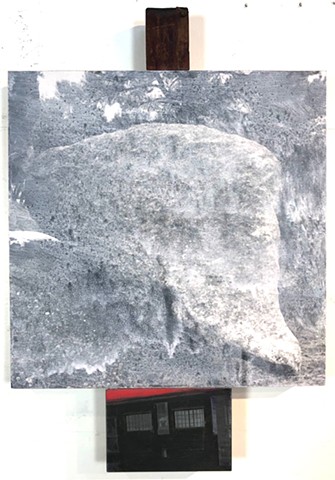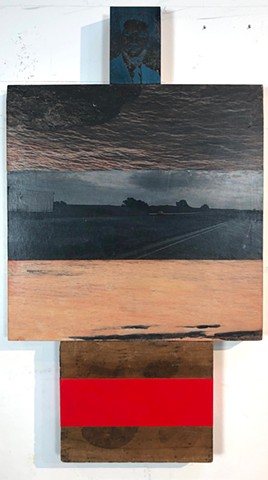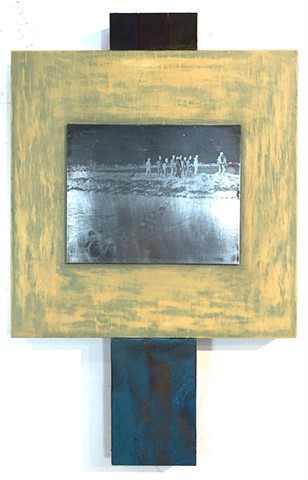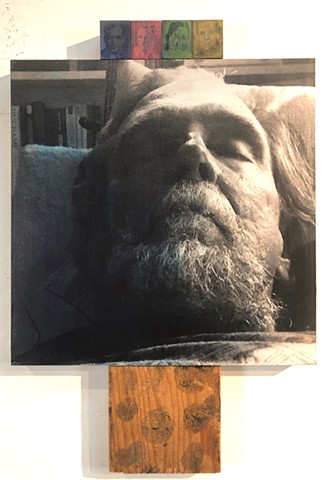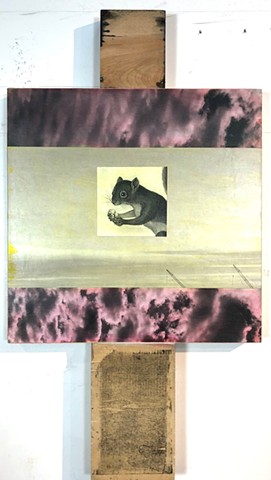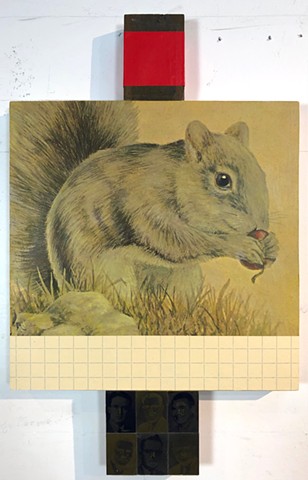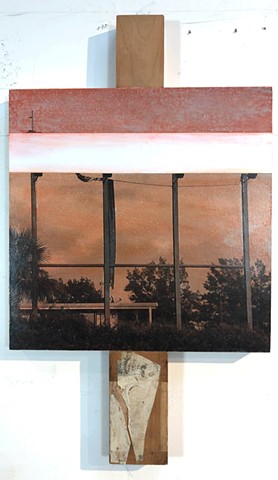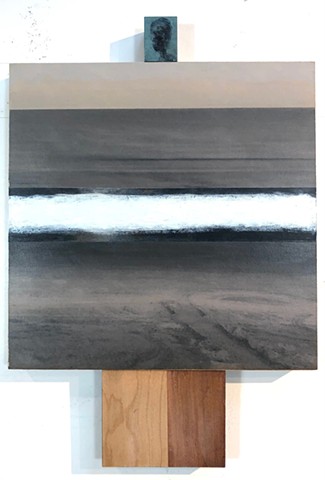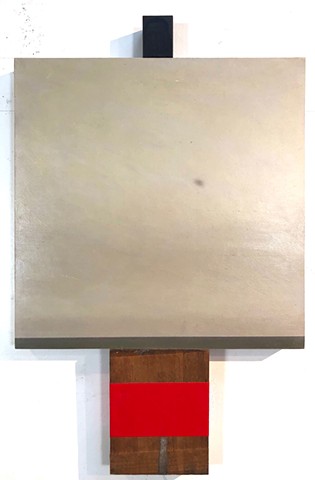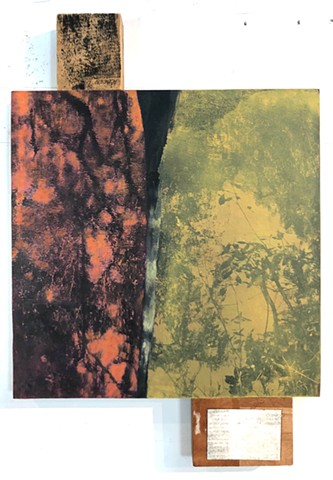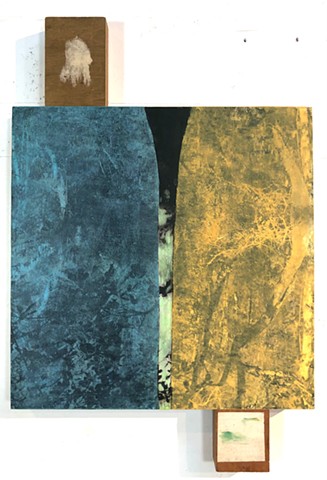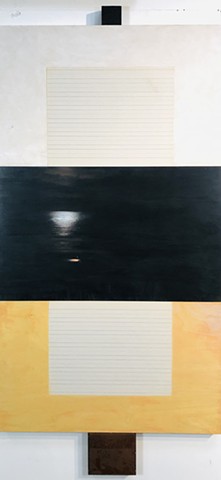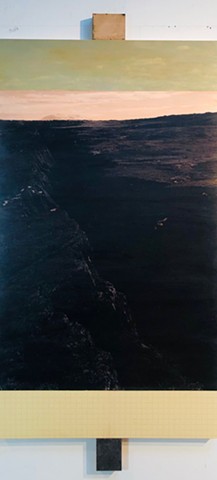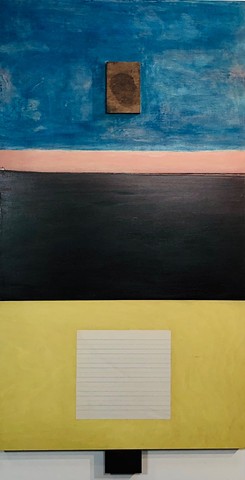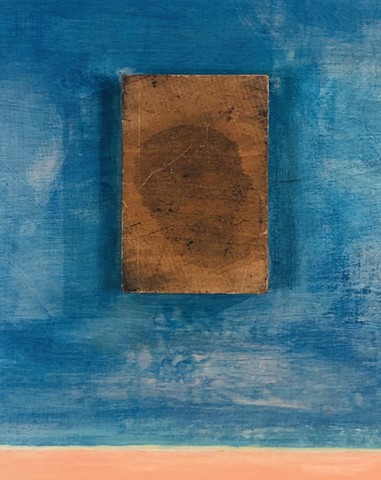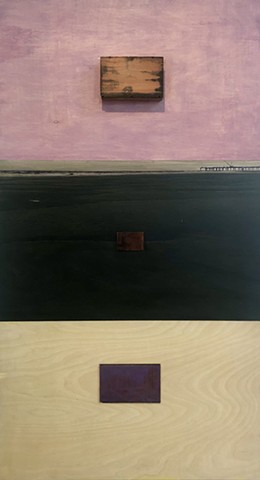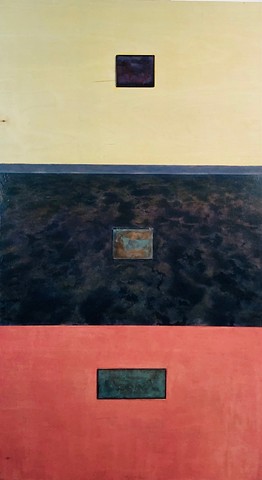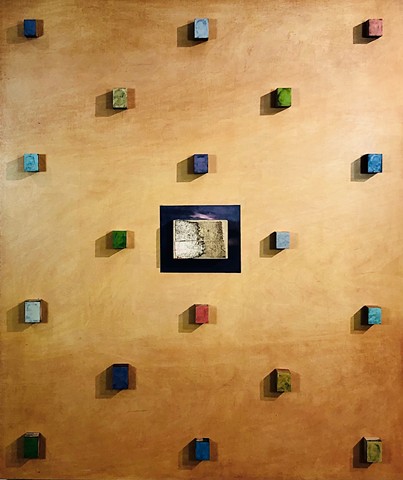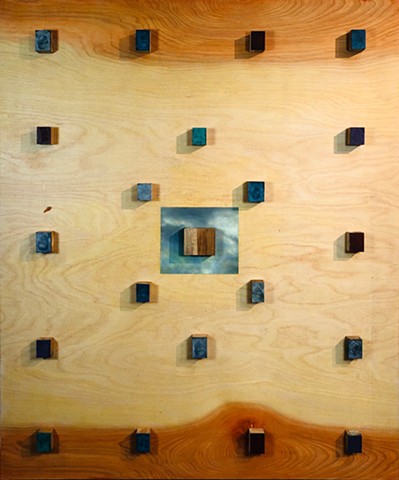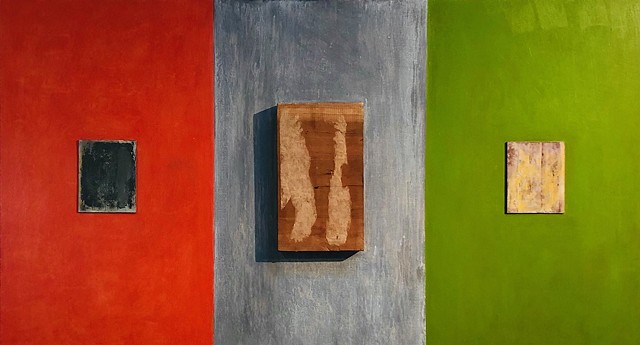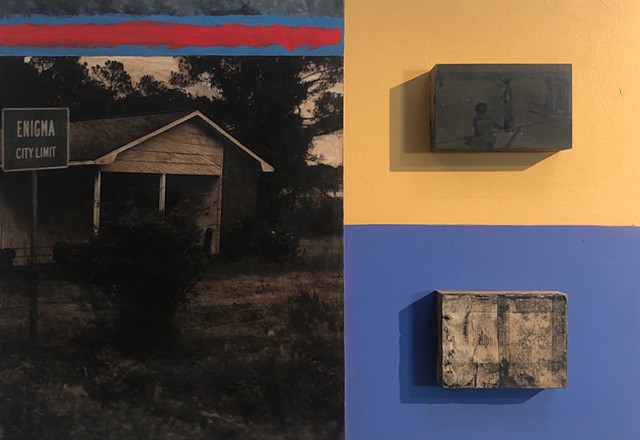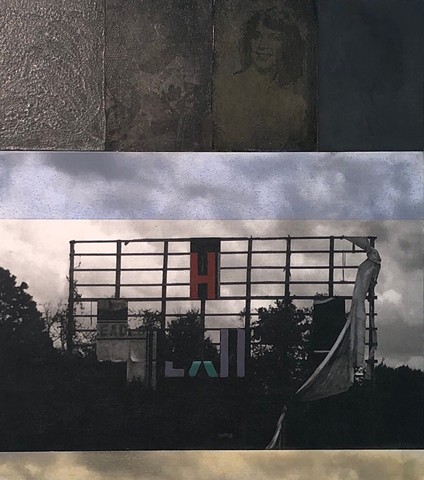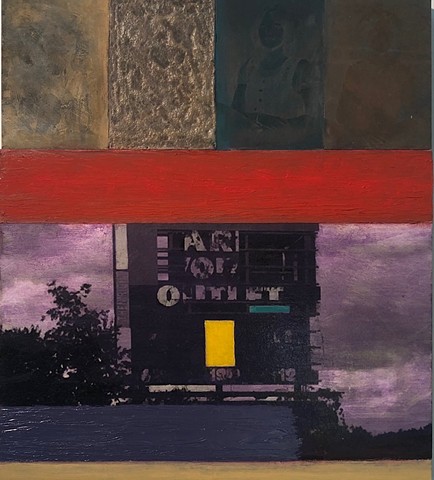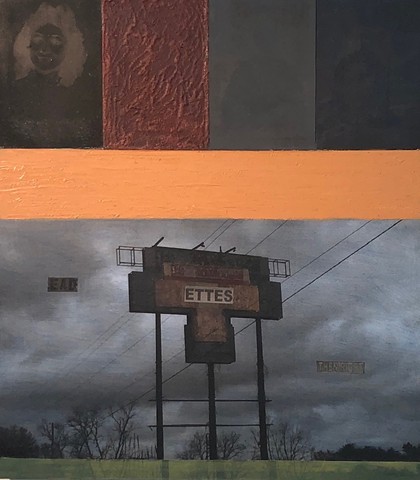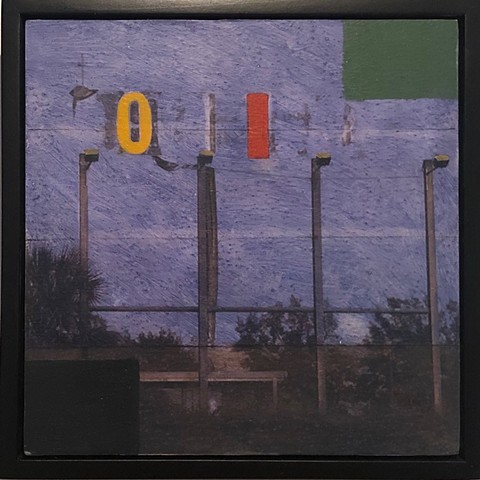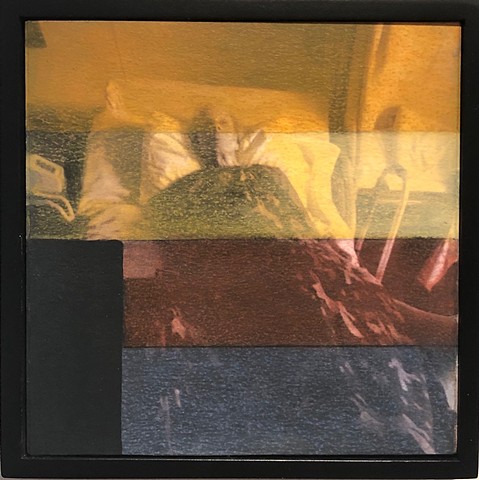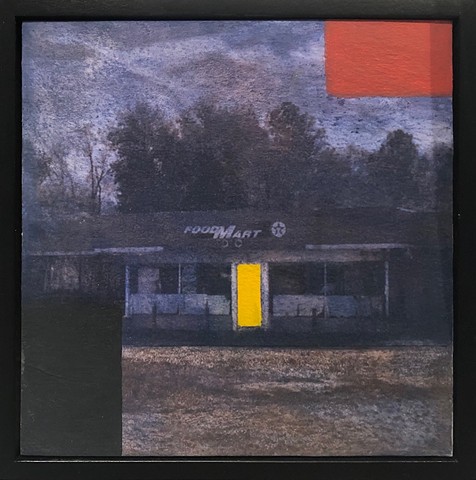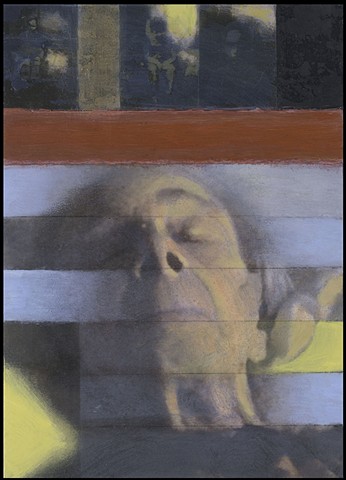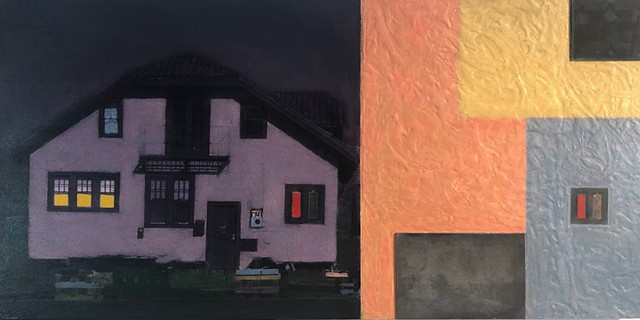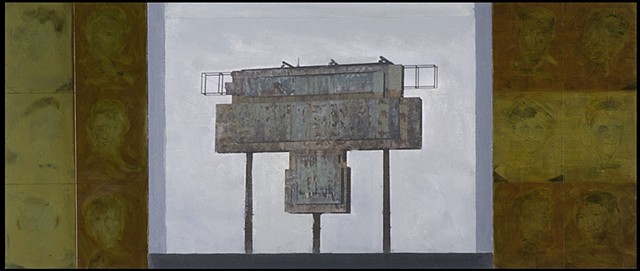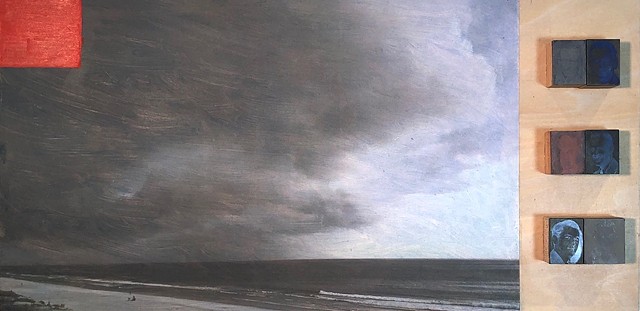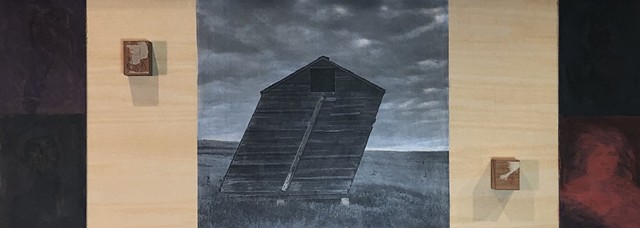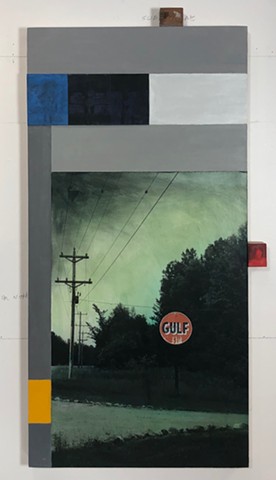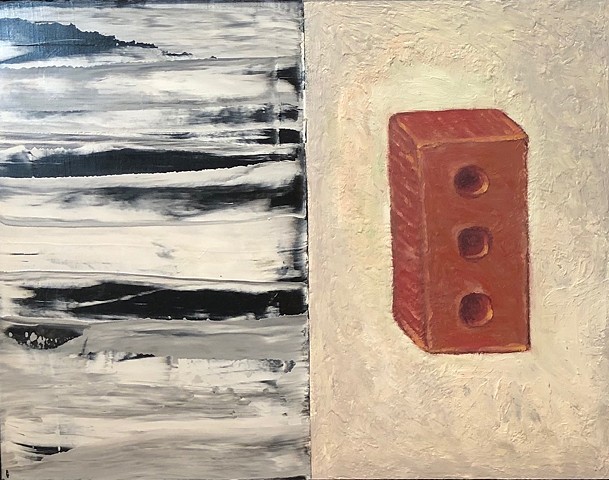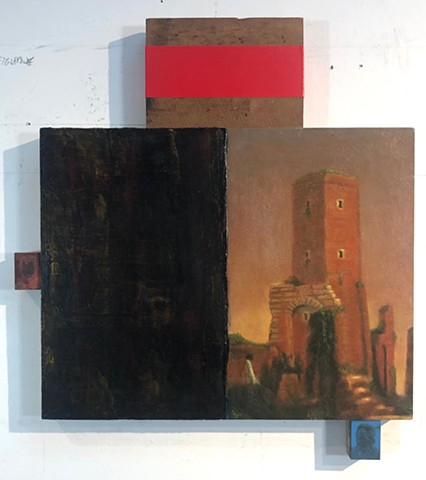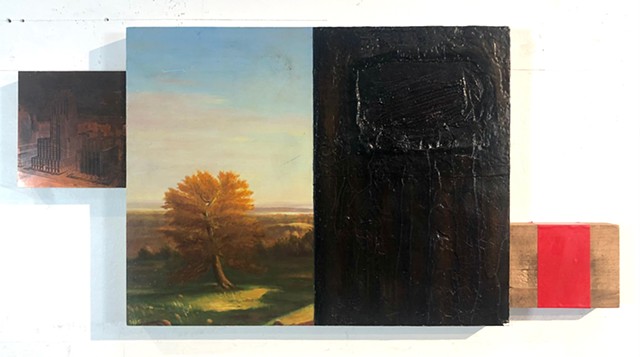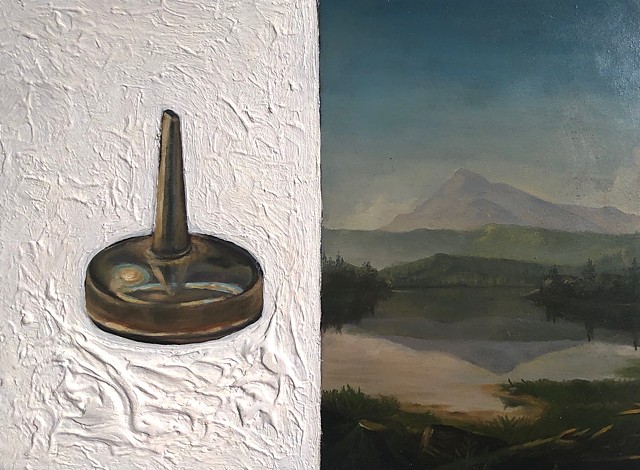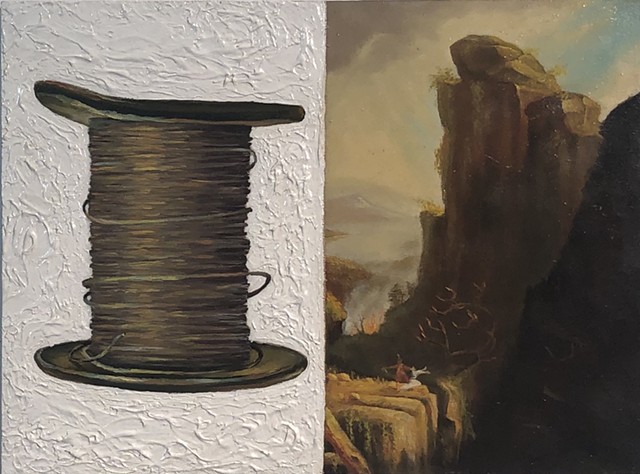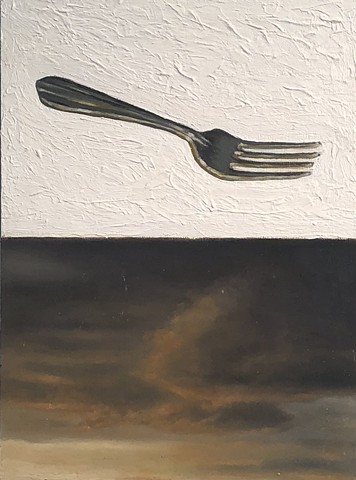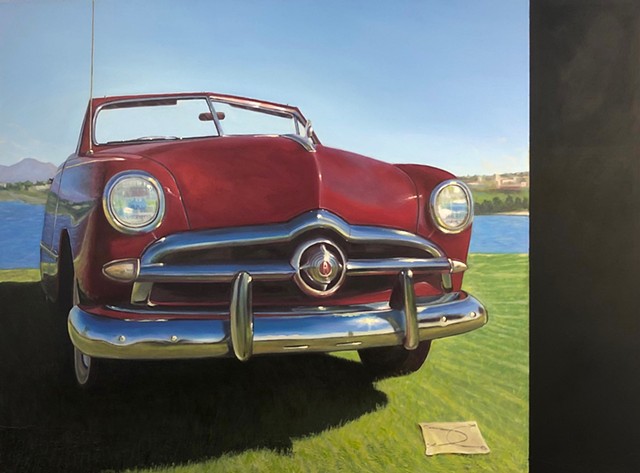Passages
Over the course of the last couple of years Boise painter and mixed media artist Richard Young has given us sneak previews on Instagram of some of the works currently in his impressive one-man show at Boise State University’s Blue Galleries, located in the Center for the Visual Arts building. They did not prepare viewers for what was in store for them in the actual event.
Entitled “A Delicate Balance,” the 45-piece exhibition is part new work, part retrospective and covers a period when events in Young’s personal and professional life have had an ongoing impact on his art. It is a remarkable exhibit in terms of both scope and intensity, and allows us to witness the unfolding of new ideas, techniques and materials by this innovative, prolific artist. As former BSU Art Department Professor and Chair, for Young, who had a hand in making this extraordinary building a reality, it is, in a very real sense, a homecoming.
In 2018, Young retired from his professorship to devote himself fulltime to his art. Since then, his output has been prodigious. Two fortunate developments helped fuel a new burst of energy in the studio. In 2017, he was awarded a two-month long Artist-in-Residency grant in northern Iceland, an experience that had a major impact on his work. Coming as it did after the passing of his wife, artist Cheryl Shurtleff, this land of stillness and solitude opened his eyes and mind to a number of entwined dichotomies in nature and life, which, for Young, included “loss and recovery, equilibrium and flux, and past and present.” The give and take of geologic forces at play in Iceland inspired Young to recognize and explore the delicate balance of forces within his own interior terrains.
Secondly, Young had the good fortune of obtaining over 100 engraved metal printer’s plates mounted on wood blocks. This windfall of ghostly, anonymous yearbook photos and reproductions of buildings, places and things not only provided a gold mine of new material for Young to incorporate into his art, but opened up a new realm of aesthetic possibilities as well. It has facilitated the juxtaposing of, and interaction between, representational and abstract elements to achieve a three-dimensionality in his work, and expand beyond the boundaries of the square, flat surface of his plywood supports. Each work is no longer just a window to look through but an object in and of itself, intruding into our space.
This exhibition reveals the range of influences that have informed, and continue to inform his art, from landscape painting (particularly 19th century romanticism), to surrealism, to Josef Albers’ poetic “homages to the square,” and photography. His inclusion of found objects in his heretofore two-dimensional work perhaps suggests a Duchampian bent as well.
Upon entry to the exhibit the visitor is greeted by works from 2003. Young’s Pop Art-like sensibility is revealed in his ability to recognize the iconic possibilities in commercial products. In “Message from Detroit” and “Message from LA,” classic 1950s and ‘60s cars strike a grand pose in the advertising style of the day, while further down paintings of everyday tools and hardware are promoted to icon status as they share wood panels with Hudson River School-inspired landscape scenes.
Except for the 2003 works mentioned above, “A Delicate Balance” picks up from where Young left off after completing two bodies of paintings during and immediately following his sojourn in Iceland. In 2019-20 the tone of his art changes as he focuses more intensely on the themes of loss and grieving through the inclusion of his own photography and use of the printing blocks.
In a series of multi-media works collectively called “Passages,” Young turns his focus to photographing abandoned buildings, empty houses and deteriorating billboards with most of their advertising missing. These photographs, representing as they do futility and defeat, become, with the attached printing plates, the tangible equivalent of the idea of mourning and loss.
In one piece a sign introduces us to a town called Enigma which, given its reference to hidden meanings makes it an appropriate setting for such mixed media works as “Family Vacation 1, 2 and 3,” and the particularly poignant image of his elderly, bedridden mother in “To Jean,” the centerpiece of this grouping. Young’s combined mediums of photography and water-based oils, the inclusion of printing blocks with the images often obscured by wearing down or overpainting the plates with water-based oils, lends these images a faded-memories quality, and a haunting translucency.
In the larger of the two exhibition spaces, an entire wall is dedicated to Young’s mixed media work from 2019 through 2021, capturing the course of his art over this three-year period. There is a rhythm to this show revealed here, a contest between the negative and the positive that reflects the artist’s various ruminations embodied in this procession of forms, materials and imagery.
Young is very open to sharing aspects of his psyche and autobiography giving his art an intimacy we are unaccustomed to seeing these days. His inclusion of self-portraits, one entitled “Lineage,” the other also titled “A Delicate Balance” from 2021, are a case in point. In the second piece we witness a balancing act between vulnerability and contentment represented by the artist asleep inside a protective cocoon of abstract elements.
Along with the scenes of the dilapidated billboards there are other landscape works that also belong to this genre that could be called roadside romanticism. This is painting and photography that is inspired by the stretches of road we drive through and what we encounter there. Young’s old Gulf gas stations fall into this category as well. In the mixed media pieces “Red Square” (2020) and “Reconfigured” (2021), the artist captures an off-road, weather-beaten barn on the verge of collapse, leaning precariously to one side, a lonely structure under a threatening sky, at the mercy of the elements. They are moody, melancholy scenes. At the same time, there is “The Road Home” (2021), with its flat stretch of highway disappearing into the distance to a familiar destination with mixed feelings perhaps.
Concurrently, Young was making art like the seemingly ice-encrusted “Anonymous” whose painted and distressed photographic surface has an intriguing wintery beauty that stops us in our tracks.
But the strongest evidence of Young’s moving on from the past are the six new abstract paintings/collages installed on a wall by themselves. All but one are vertically formatted, and in them we see echoes of Mark Rothko’s rectangular color structures and, in two, Agnes Martin’s canvases of graphite pencil-line grids and striations. Particularly striking is “The Searchers,” with its photograph of a dark, subtle, reflected moonlight scene and collaged sheets of lined note paper overlaying painted panels. There is a wedding of two visions of the sublime here, combining romantic landscape and minimalism.
One cannot close without mentioning Young’s large mixed media work on finished wood, “A Gathering.” With its 20 printing blocks presenting yearbook photos of hopeful, innocent faces, it is in sharp contrast to the angry crowds that fill the news today, as was the artist’s intention. It is a thought-provoking critique of our times.
This diverse, moving and visually compelling show is up through the end of March.
Christopher Schnoor
Passages explores loss and recovery, equilibrium and flux, and past and present. These ideas are visible in my life as an artist exploring materials and ideas in the studio with expected and unexpected consequences and as a human being experiencing stability, disruption and reformation.
Many of the works were prompted by the discovery and purchase of over 100 antique printer’s plates mounted on wood blocks. The photo-engraved metal plates were used in printing newspapers and books throughout the 20th century. They resonate with memories of the past including anonymous yearbook photos, prized animals, buildings, geographical sites, etc. The work also features photographs I’ve taken over several years including a welcome sign for the town of “Enigma” and old billboards where decaying signs contain fragments of the original message. Many of the photographs were taken in South Georgia where my elderly mother currently lives. In many ways the photographs became a way of actualizing the inevitability of loss.
The landscape as signifier has been a focus of my work for many years. While attending an two -month artist’s residency in northern Iceland in 2017, I studied the geology of the country and explored ways the landscape could be used as subject matter to grapple with the recent death of my wife. I began to use multiple horizon lines (subdivisions of the rectangle) to visualize the what lies beneath and how it supports what is above. Iceland as a landmass is in constant flux due, in part, to shifting tectonic plates and the submerged mid-Atlantic ridge. Its stability is literally being disrupted and re-formed.
The geometry of the grid serves as a primary means of organizing visual information. As a graduate student I worked with a painting professor who required students to subdivide a rectangle with lines and then blocks of value and color for 8 weeks. The process was very constricting for most students until the professor asked his students to include representational elements thus using the abstract studies as a catalyst for creating a variety of compositions. In my work, the grid is used to arrange disparate imagery, color and varying paint surfaces both transparent and opaque. The attached printer’s plates are used to extend beyond the edge and above the grid contradicting the flatness of the plywood support. Ultimately the grid serves as a metaphor for the hidden structure of our lives, a fragile framework that is continually forming and evolving.
